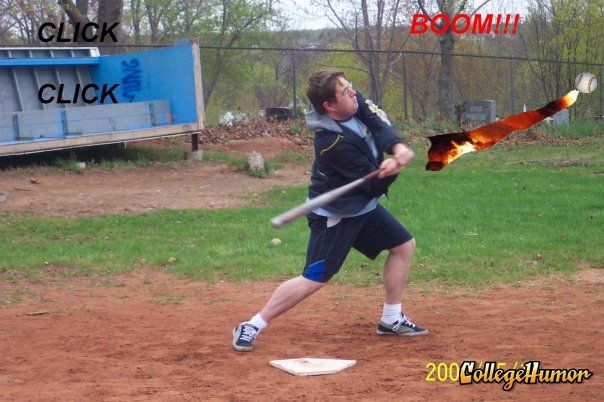Spackler
...got that goin for me
Where the hell is the scientific experiment to shut everyone up bout bat weights?! Baseball pros would use the info too meaning there's money behind it and info isn't just for a bunch of softball geeks like y'all! ....perfect for a nerdy college engineering project cause nobody cares how far your dumb 200lb car on bicycle tires can go on a gallon of gas!
Break out the swinging robot that hits balls off a tee....
1. Measure the distance different weights hit with same speed
2. How much extra bat speed is needed for a lighter bat to hit same distance as a heavier bat
Publish results!
Maybe if you weren't so lazy you'd do it okey:
okey:
Break out the swinging robot that hits balls off a tee....
1. Measure the distance different weights hit with same speed
2. How much extra bat speed is needed for a lighter bat to hit same distance as a heavier bat
Publish results!
Maybe if you weren't so lazy you'd do it


